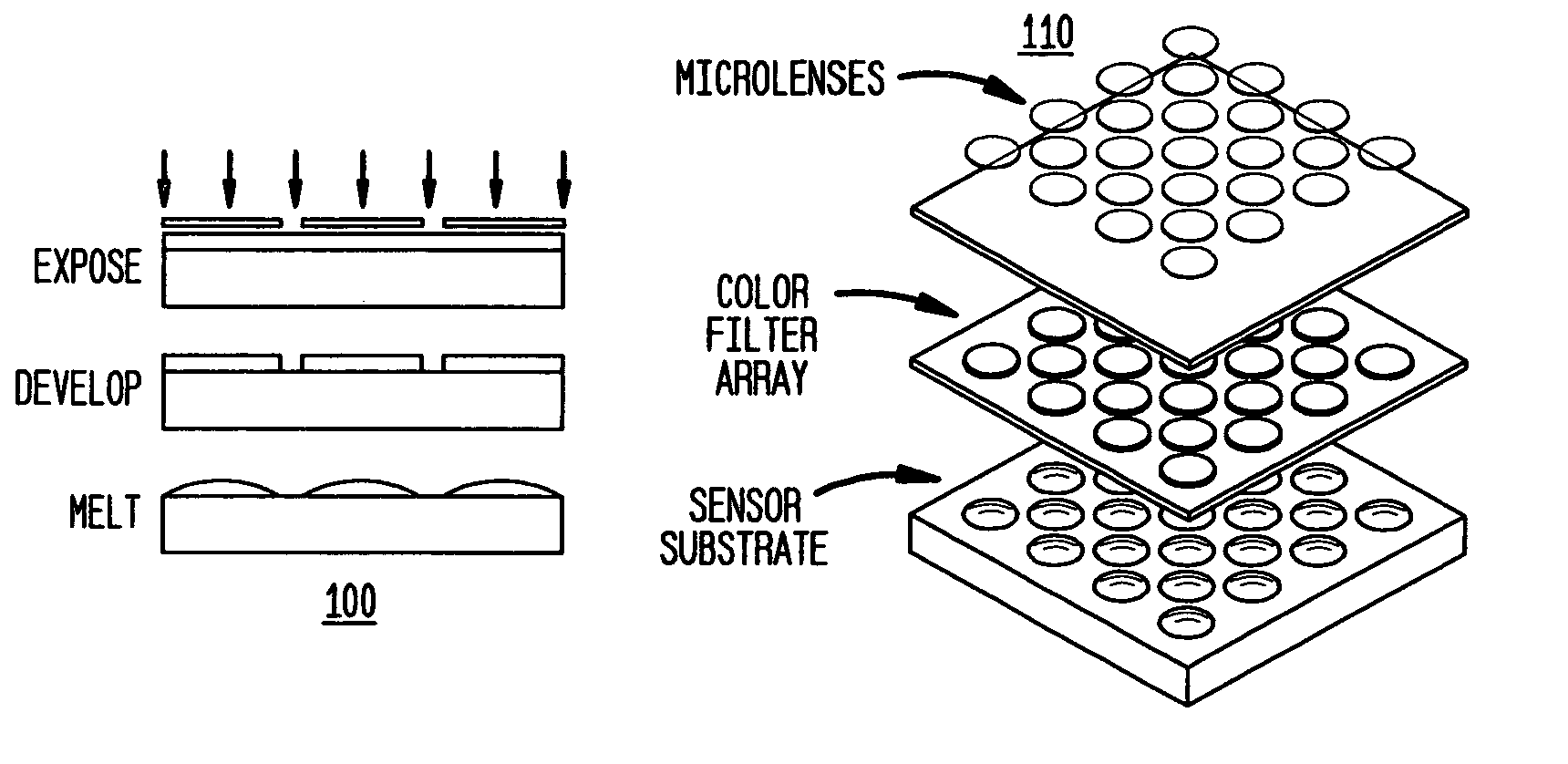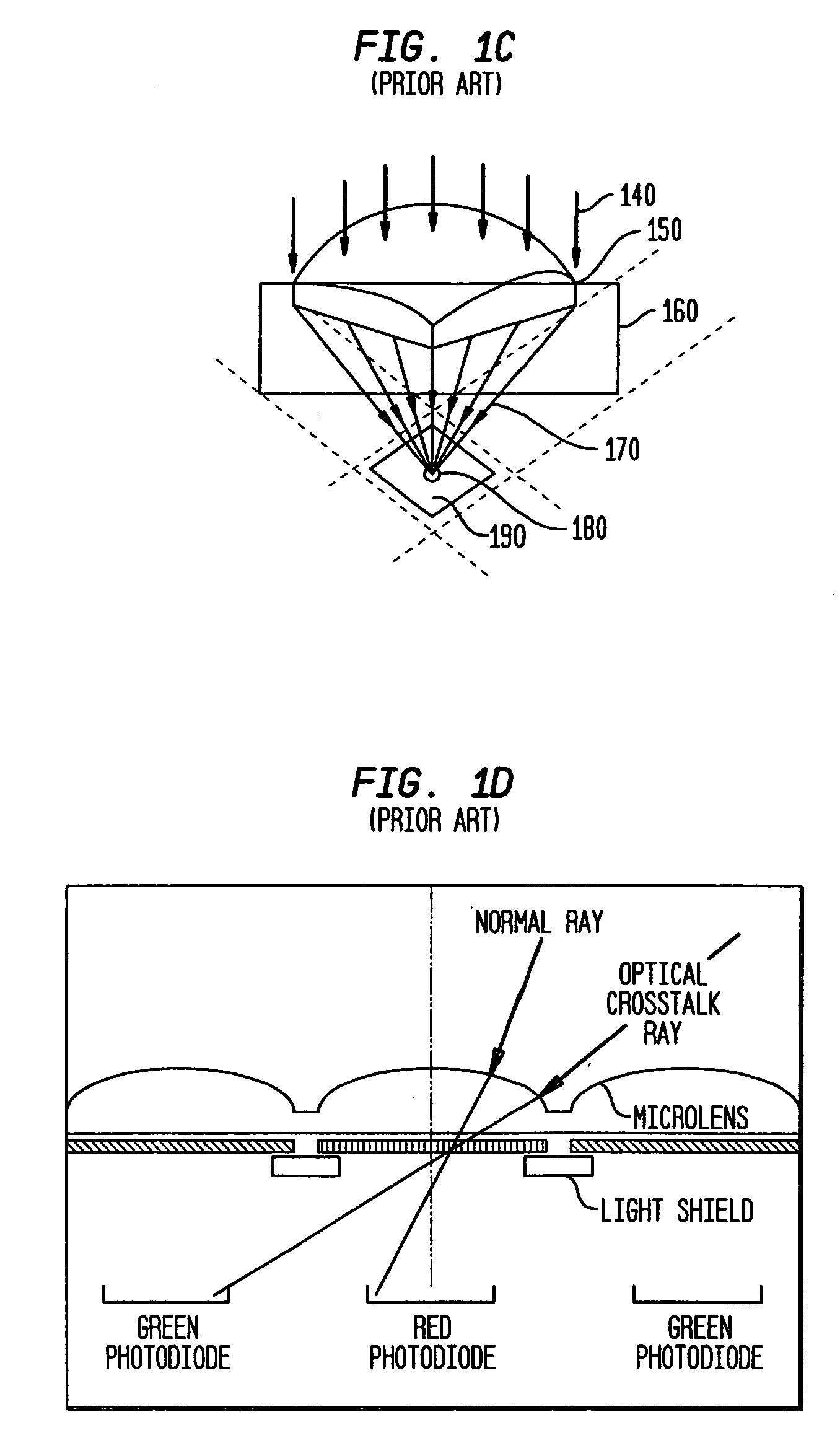Injection molded microoptics
a micro-optics and injection molding technology, applied in the field of high-efficiency waferscale micro-electronic process, can solve the problems of difficult to achieve long focal length high radius of curvature and high refractive index micro-lens arrays, poor control of the fill-factor of the photodiodes in the array comprising the pixel plane, and poor control of the fill-factor of the photodiodes. , to achieve the effect of high optical design,
- Summary
- Abstract
- Description
- Claims
- Application Information
AI Technical Summary
Benefits of technology
Problems solved by technology
Method used
Image
Examples
Embodiment Construction
[0029] The present invention teaches an apparatus and method for the formation of planar arrays of microlenses and / or optical waveguides and photonic devices which may comprise, inter alia, optical bus I / O and memory structures in advanced future computer backplanes, image-formation layers on CMOS or CCD solid-state color imagers, matrix arrays of lenses on flat panel displays, and other fields of applications for microoptic elements.
[0030] Unlike conventional art, aspherics, anamorphics, cylindrical lenticular and ellipsoidal microoptic surface designs may be realized with the present invention to provide the long focal lengths required for semiconductor color imaging devices or for VCSEL (vertical cavity surface emitting laser) couplers, particularly those used in parallel optical links including applications such as InfiniBand channels for computers and storage devices. Employment of high refractive index materials, such as polymers, or glasses, or liquid crystal materials, with...
PUM
| Property | Measurement | Unit |
|---|---|---|
| diameter | aaaaa | aaaaa |
| pressures | aaaaa | aaaaa |
| divergence angle | aaaaa | aaaaa |
Abstract
Description
Claims
Application Information
 Login to View More
Login to View More - R&D
- Intellectual Property
- Life Sciences
- Materials
- Tech Scout
- Unparalleled Data Quality
- Higher Quality Content
- 60% Fewer Hallucinations
Browse by: Latest US Patents, China's latest patents, Technical Efficacy Thesaurus, Application Domain, Technology Topic, Popular Technical Reports.
© 2025 PatSnap. All rights reserved.Legal|Privacy policy|Modern Slavery Act Transparency Statement|Sitemap|About US| Contact US: help@patsnap.com



